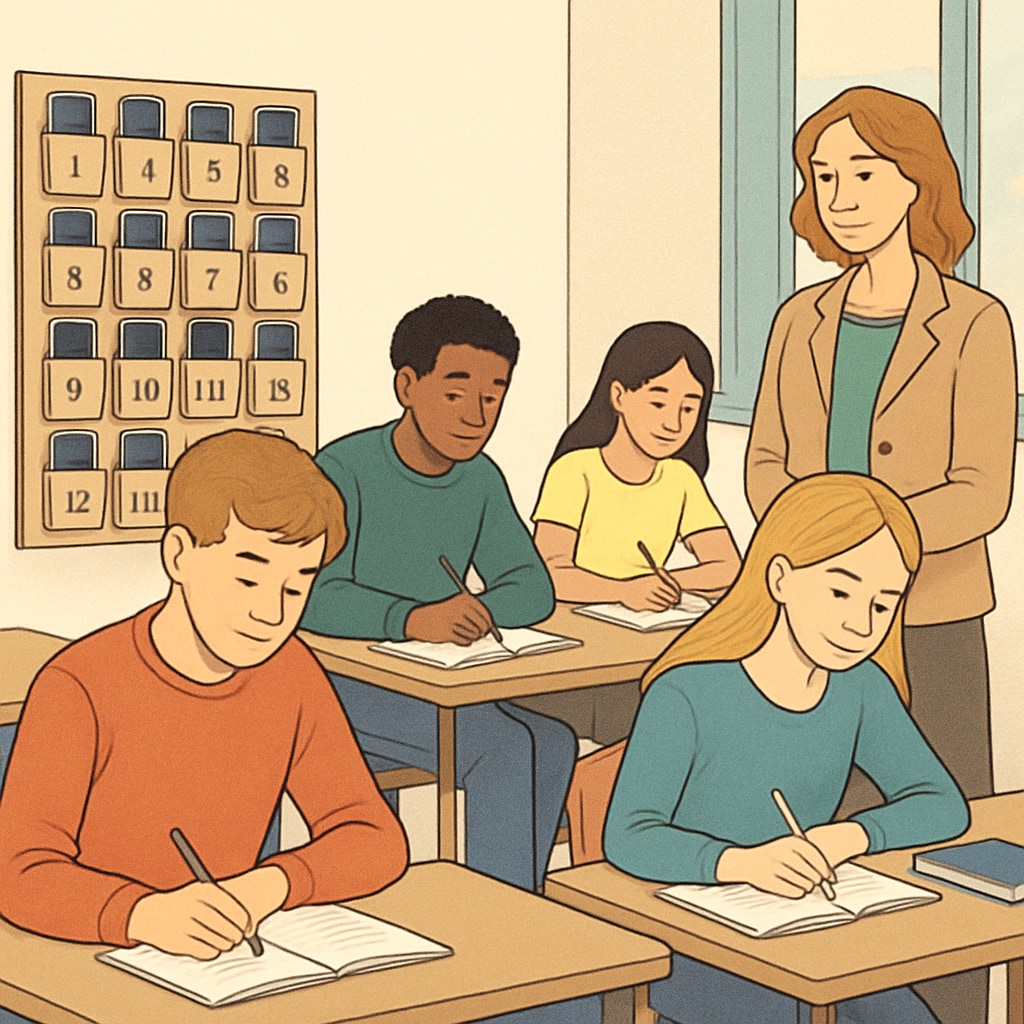The rise of phone bans in schools has ignited heated discussions about their role in enhancing school safety, improving learning focus, and addressing student rights. While some argue that restricting phones is necessary to restore focus and discipline, others question whether such measures represent overreach in school control. As more states and schools adopt these policies, finding a balance in the digital age becomes a pressing challenge.
Do Phone Bans Enhance School Safety and Learning Focus?
Proponents of phone bans believe these policies serve as educational saviors. They argue that smartphones, while useful tools, often act as significant distractions in classrooms. Social media, gaming, and texting can divert attention from learning, leading to decreased academic performance. Furthermore, unrestricted phone use can contribute to cyberbullying and social isolation during school hours.
In addition to improving focus, phone bans are often promoted as a way to enhance school safety. By limiting access to digital devices, schools aim to reduce instances of online harassment and inappropriate content sharing on campus. According to a study by Common Sense Media, nearly 59% of teens have experienced cyberbullying, much of which occurs during school hours.
However, critics argue that banning phones outright might not necessarily address these issues. They suggest that teaching responsible phone usage and digital etiquette could be a more effective long-term solution. Moreover, some parents worry about not being able to contact their children during emergencies.

The Practical Challenges of Implementing Phone Bans
While the benefits of phone bans are often highlighted, their practical implementation poses several challenges. First, enforcing a strict ban requires significant logistical planning and resources. Schools must determine where and how phones will be stored during the day, as well as how to monitor compliance. For example, some schools use lockable pouches or storage bins, but these systems can be costly and time-consuming to manage.
Second, many educators worry about the potential backlash from students and parents. Teenagers, in particular, view their phones as essential parts of their daily lives, not just for social interaction but also for educational purposes. Some teachers even incorporate smartphones into their lessons, using apps or online tools to engage students in interactive learning.
Lastly, enforcing a phone ban may inadvertently shift teachers’ roles from educators to enforcers. This can create tension and detract from their primary responsibility of teaching. As a result, many educators believe that finding a middle ground—such as restricting phone use during specific times or in certain areas—might be more effective.

Balancing Technology and Education in the Digital Age
As the debate over phone bans continues, schools must navigate the delicate balance between promoting education and respecting students’ rights. One potential solution lies in adopting “phone-free zones” rather than outright bans. For instance, students could be required to store their devices during lessons but allowed to use them during breaks for personal or educational purposes.
Another approach involves integrating digital literacy programs into the curriculum. Teaching students how to responsibly use their devices can empower them to make better decisions about screen time and online behavior. Organizations like Digital Responsibility advocate for such initiatives, emphasizing the importance of preparing students for a tech-driven world.
Lastly, schools could collaborate with parents to establish consistent rules for phone use both at home and in the classroom. Open communication between educators and families can foster a shared understanding of the benefits and drawbacks of technology in education.
Ultimately, the goal should be to create an environment where technology enhances learning rather than hinders it. By addressing the root causes of distraction and misuse, schools can promote a culture of focus and respect without resorting to extreme measures.
Conclusion: Is a Phone Ban the Answer?
The debate over phone bans in schools is far from settled. While these policies may improve school safety and learning focus in some cases, they also raise questions about practicality, equity, and student rights. As the digital age continues to evolve, schools must adapt their approaches to technology, seeking solutions that balance discipline with opportunity.
Rather than viewing phones as enemies of education, perhaps it’s time to recognize their potential as tools for learning and connection. By fostering responsible usage and setting clear boundaries, schools can pave the way for a more harmonious relationship between education and technology.
Readability guidance: This article uses short paragraphs and clear subheadings to enhance readability. Lists and examples are included to summarize key points. Overuse of passive voice and long sentences is avoided.


